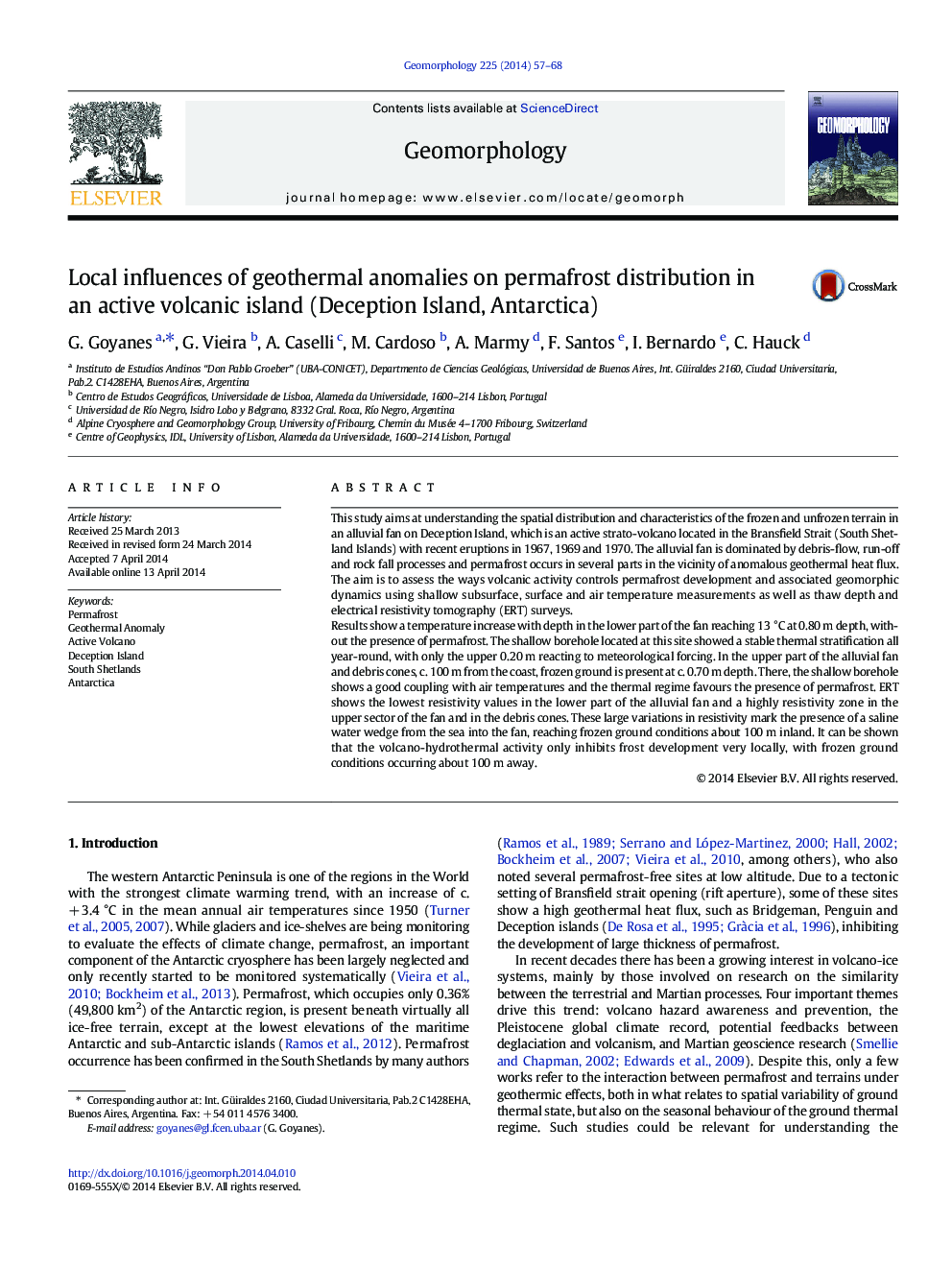| Article ID | Journal | Published Year | Pages | File Type |
|---|---|---|---|---|
| 4684467 | Geomorphology | 2014 | 12 Pages |
Abstract
Results show a temperature increase with depth in the lower part of the fan reaching 13 °C at 0.80 m depth, without the presence of permafrost. The shallow borehole located at this site showed a stable thermal stratification all year-round, with only the upper 0.20 m reacting to meteorological forcing. In the upper part of the alluvial fan and debris cones, c. 100 m from the coast, frozen ground is present at c. 0.70 m depth. There, the shallow borehole shows a good coupling with air temperatures and the thermal regime favours the presence of permafrost. ERT shows the lowest resistivity values in the lower part of the alluvial fan and a highly resistivity zone in the upper sector of the fan and in the debris cones. These large variations in resistivity mark the presence of a saline water wedge from the sea into the fan, reaching frozen ground conditions about 100 m inland. It can be shown that the volcano-hydrothermal activity only inhibits frost development very locally, with frozen ground conditions occurring about 100 m away.
Related Topics
Physical Sciences and Engineering
Earth and Planetary Sciences
Earth-Surface Processes
Authors
G. Goyanes, G. Vieira, A. Caselli, M. Cardoso, A. Marmy, F. Santos, I. Bernardo, C. Hauck,
